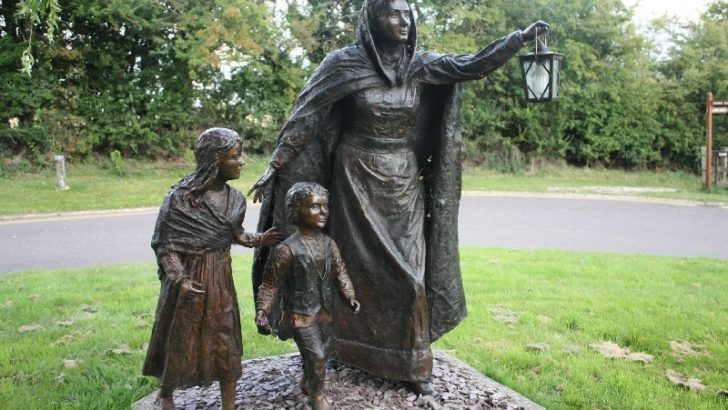Nano Nagle: The life and the Legacy
by Deirdre Raftery, Catriona Delaney, and Catherine Nowlan-Roebuck (Irish Academic Press, €24.95)
In 2013 Pope Francis declared Nano Nagle (1718–84), the founder of the Presentation Order, to be venerable. For the nuns of that order, their friends and associates and the countless admirers of Nano Nagle’s work this was a great occasion.
This academic study surveys her legacy. Hence the authors opt for a thematic approach with chapters headed: ‘Nano Nagle: her life and times’, ‘Founding and Funding’; ‘The Establishment of a Network of Irish Convents’; ‘The Presentation Sisters in Newfoundland’; ‘Presentation Education, Pupils and Pedagogy’; ‘Schools for the Starving’; ‘Presentation Sisters in England’; ‘Presentation Sisters and Second-Level Education’; and ‘The global Reach of Presentation Education’.
Between 1807 and 1830 the Presentation Order experienced its most active period of expansion in Ireland. Twenty-two new convents were opened in fourteen counties. By 1837 the Order had grown to include 34 convents, 32 of which were in Ireland.
Foundations
These foundations were established at the invitation of bishops and priests. They were funded by bequests, donations (mainly from their patrons) or collections. The convents were also funded by the dowries that the Sisters brought with them into their respective convents.
In 1833 the Presentation Sisters made their first overseas foundation when they sent four Sisters from Galway to Newfoundland. During that century they opened fifteen in that Canadian province, with schools attached to all of them.
In the 20th Century they continued to expand, opening a further 34 convents across the island, along with many schools. In each case they were invited to do so by bishops or parish priests. By the mid-1960s hundreds of Presentation Convents had been established across all five continents.
An almost total disregard for the sometimes harsh and difficult physical conditions they faced was an attitude shared by all the foundresses of all the convents at home and especially those abroad.
This was particularly the case with regard to the foundations in the Dakota Territories in the US in the 1880s. To entice settlers to the North West the authorities published cheery advertisements describing it as “God’s country that laughs with abundance when tickled by the plough”.
However, when the settlers including the sisters, arrived they found an area which could be covered in snow for half the year and suffer from severe drought for most of the rest of it, a place with the most basic communications and transport.
Apart from challenging physical conditions, founding sisters also on occasion had to face anti-Catholic bigotry, this most markedly in England.
The Presentation Sisters throughout Ireland provided food and clothing to poor pupils. They courageously tackled the awful problems posed by the famine of 1846-47.
The entry in the convent diary in Listowel for that period is typical of those in the other convents. It records that utilising their somewhat scanty resources, and donations received from benefactors, the sisters succeeded in serving their pupils a substantial breakfast of bread, a mug of boiled rice and a little milk almost every morning during those dreadful years.
But sadly by 1848 the community was destitute and some of the sisters died due to overwork and under-nourishment.
The authors do not overlook the main motivation behind the lives of Nano Nagle and the Presentation Sisters. They were first and foremost Christian missionaries. The education they provided was Catholic education. This was eloquently described in the encyclical Divini Illius Magistri as forming Christ in those regenerated by baptism.
By virtue of their teaching, the sisters exercised a profound influence on the social life and especially the quality of married and family life in the communities and parishes in which their convents were situated.
Abroad, they were frequently the fulcrum of Catholic parishes. With their numerous foundations the Presentation Sisters were an important element in the extraordinary Catholic outreach from Ireland to the rest of the world in the 19th and 20th Centuries.
And in the envoi the authors highlight the fact that all the Presentation convents could ultimately be traced back to Nano Nagle.


 Statue of Nano Nagle leading the way out of darkness which stands at her birth place in Ballygriffin, Co. Cork.
Statue of Nano Nagle leading the way out of darkness which stands at her birth place in Ballygriffin, Co. Cork. 
